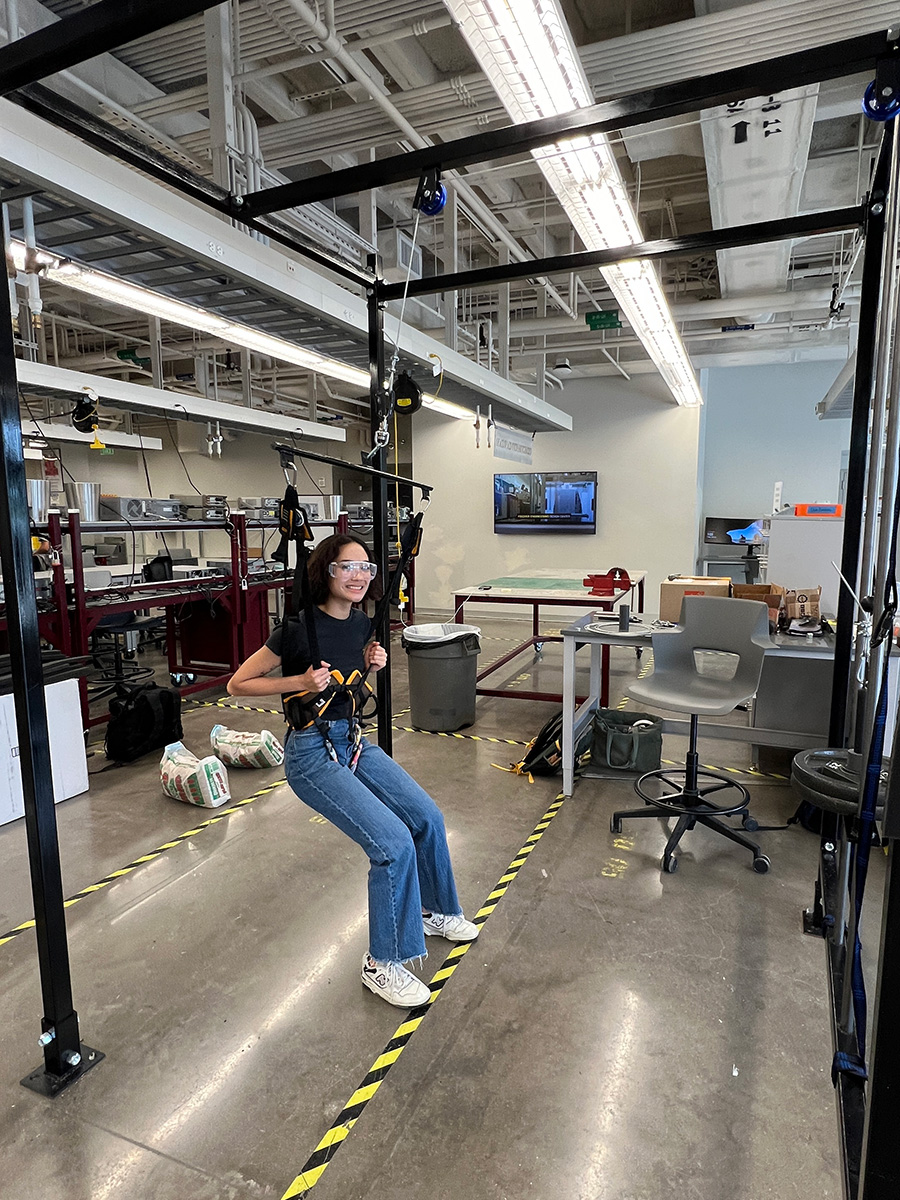
A team of mechanical engineering students collaborated with the Fortis Therapy Center in Dripping Springs, Texas, to design and build a device aimed at facilitating rehabilitation through unweighting mobility. This innovative approach alleviates the physical strain experienced by individuals dealing with injuries, disabilities, or conditions like cerebral palsy.
Fortis Therapy Center sponsored the team’s senior capstone design program project, which is a part of the curriculum for seniors in the J. Mike Walker ’66 Department of Mechanical Engineering at Texas A&M University.
Comprising Javier Lopez, Garrett True, Christina Reagan, Mikaela Fernando, Sarah Carambat, and Daniel Ruiz-Villa, the team brought a diverse range of skills and perspectives to the project.
What problem is this project seeking to solve?
Javier Lopez: Project Fortis represents a pioneering initiative designed to enable users to engage in movements like squatting and jumping, which may have previously seemed inaccessible to them. This project stands out for its revolutionary design, being the first device of its kind, and supporting multiple dynamic movements.
What interested you in this project?
Sarah Carambat: We became interested in this project not only because of the complexity but because of the direct impact that it will have on the community through the children who utilize it. Project Fortis is a challenge, but the reward of positively impacting children's lives makes it all worthwhile!
What was the most impactful part of this experience?
Christina Reagan: The most impactful part of this experience is knowing that we are designing and building a device that will directly impact improving a child’s quality of life. Seeing how our engineering skills can be used for something meaningful has been amazing. As students, we tend to get so focused on exams and assignments that it's easy to forget we now have the tools and knowledge to impact the world positively and, in this case, change lives.

What has been the biggest challenge?
Garrett True: Murphy's law is one of the hardest challenges we’ve faced as a team. Throughout the semester, we ran into various minor issues and realizations that forced us to innovate on the spot. You can spend months designing and drafting what you think is the perfect design and then find problems the second it all comes together. These can range anywhere from accidentally ordering a bolt that’s one size too small to finding out two of your original subassemblies don’t function together in practice. Solving and refining our project through these issues has been challenging but extremely rewarding and fun.
What were the most important lessons learned working on this project?
Daniel Ruiz-Villa: The most important lesson learned from working on this project is that some designs may not always reveal the extent of their impact on individuals' livelihoods. Still, our involvement underscores the profound influence we hold as engineers and that having passion for a project goes a long way.
What are you most proud of with this project?
Mikaela Fernando: We are most proud that we were able to conceptualize, design, and create a working product that can positively impact the kids who use it. We’ll see the device's direct effect at the Fortis Therapy Center and our work throughout the past two semesters. It’s been amazing to see what we accomplish as young engineers. Using engineering for service projects like ours is fulfilling, and it reminds me why I wanted to pursue engineering in the first place.
How do you think the capstone program will prepare you for the future?
Sarah Carambat: This capstone project has taught us the value of effective communication. This is the first time in a university-related project that we have dealt with an outside sponsor, a year-long project, and multiple deliverables at different deadlines. When effective communication is implemented not only between the team and the sponsors but also between the team members themselves, it dramatically impacts how smoothly the project runs. These viable skills can be brought into the workplace post-graduation and will be a critical tool that we will use to excel no matter what we do.
The team of students expressed gratitude for everyone who helped and supported them, including the mechanical engineering department and the College of Engineering for the opportunity.
“Empowering children to reach their fullest potential is a journey of endless discovery. Collaborating with bright minds from Texas A&M, we've crafted a revolutionary tool, amplifying our capacity to nurture resilience and unlock boundless possibilities,” remarked Meredith Kapchinski, the executive director at Fortis Therapy Center. “Our team of students at Texas A&M went above and beyond to create a product that we are using daily in the clinic. Our patients are having so much fun working in our new equipment, and we are already seeing improvements in their jumping skills.”